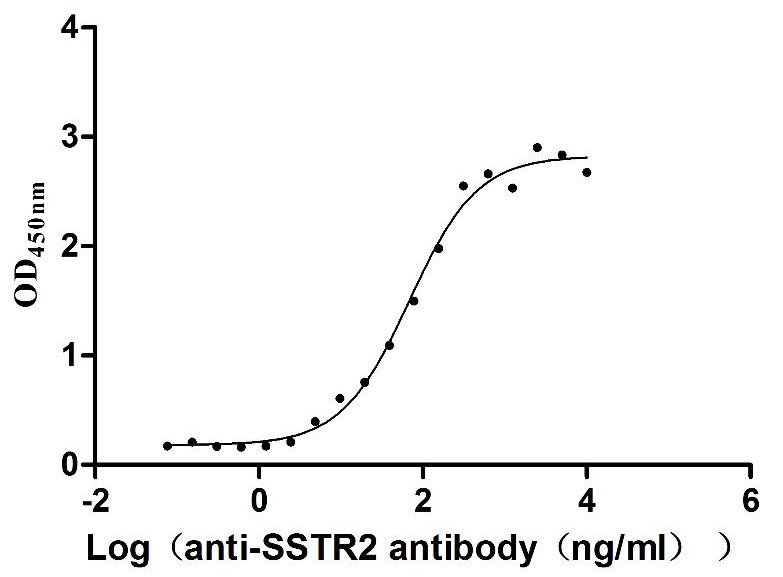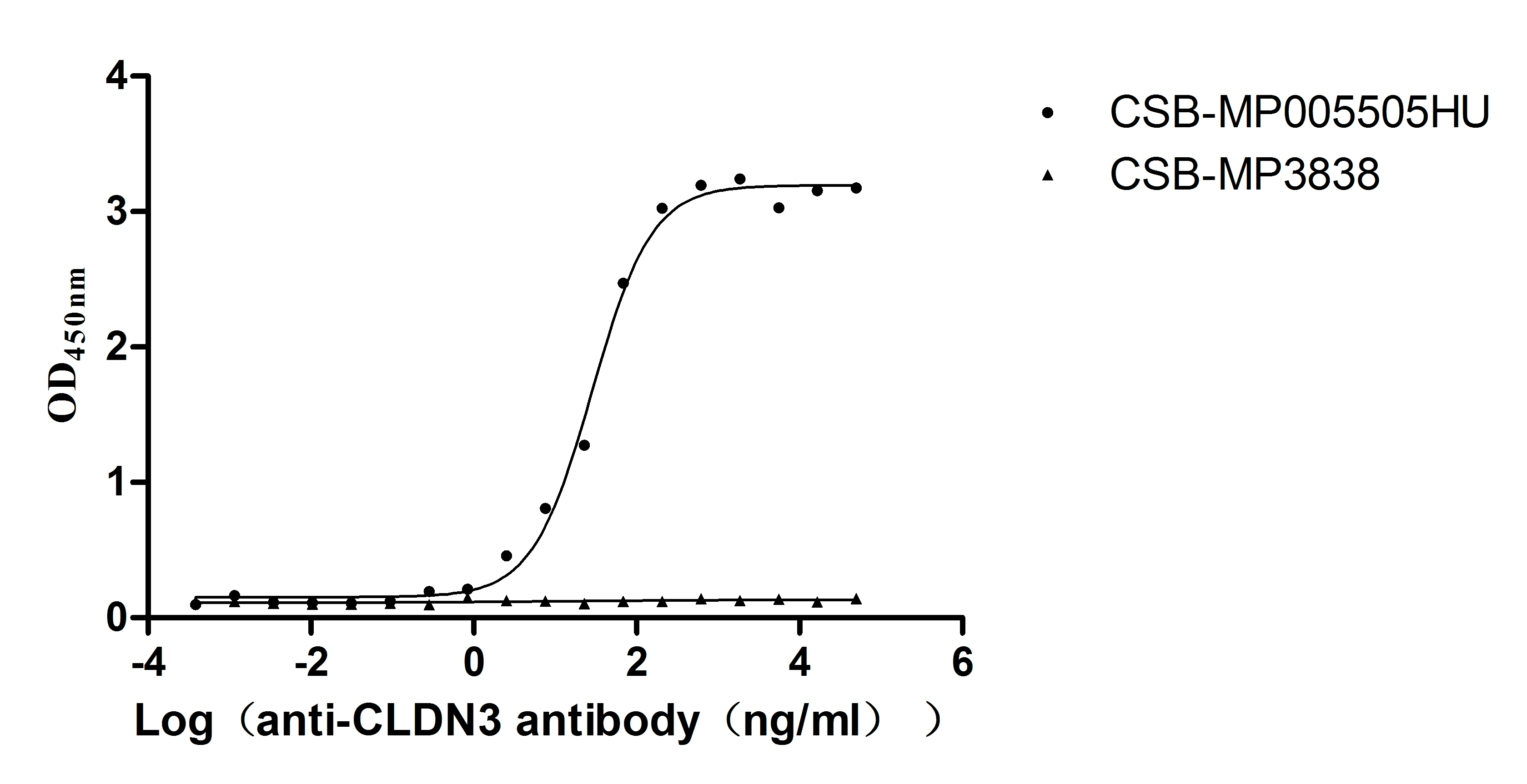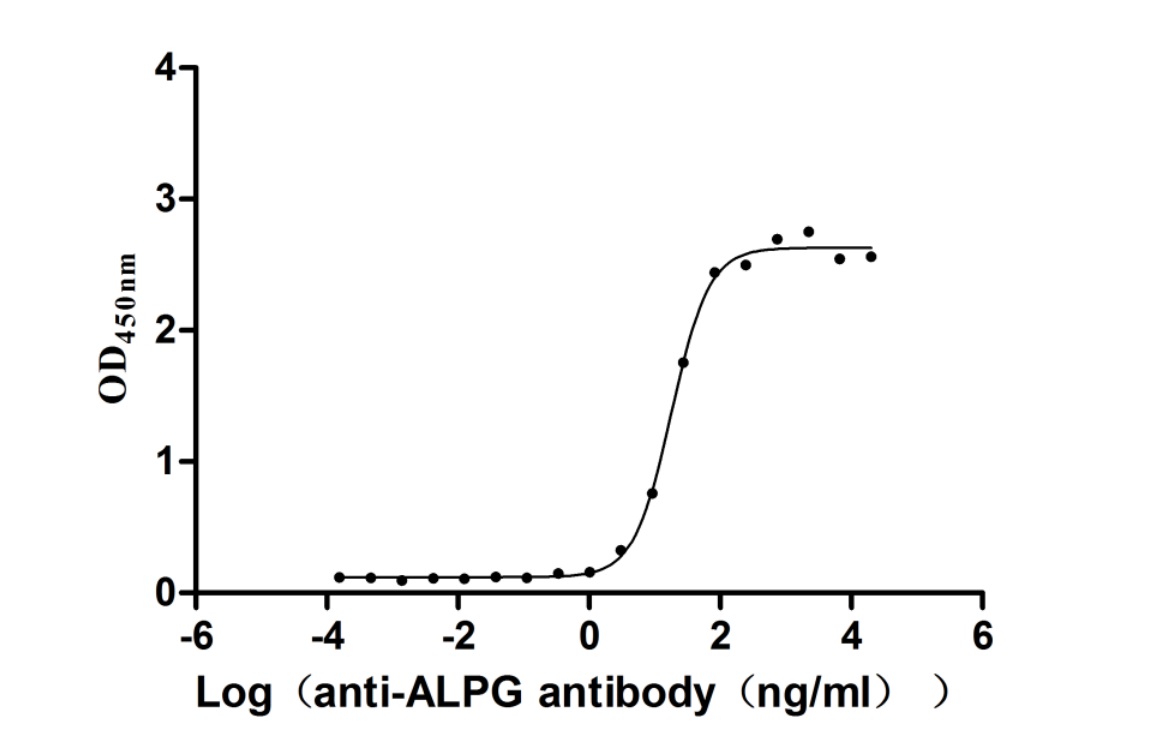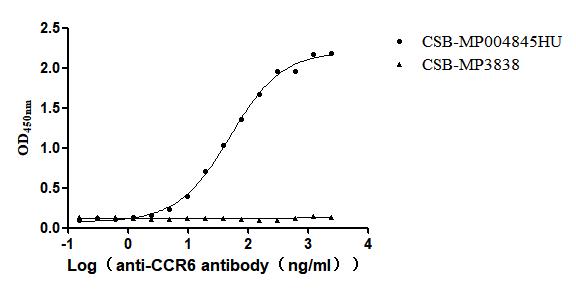Recombinant Mouse Amyloid beta A4 protein (App)
-
中文名称:Recombinant Mouse Amyloid beta A4 protein (App)
-
货号:CSB-EP001950MOc7
-
规格:¥1344
-
图片:
-
其他:
产品详情
-
纯度:Greater than 95% as determined by SDS-PAGE.
-
生物活性:Not Test
-
基因名:
-
Uniprot No.:
-
别名:ABPP;APP;Alzheimer disease amyloid A4 protein homolog;Alzheimer disease amyloid protein;Amyloid precursor protein;Amyloid-beta (A4;Amyloid-beta A4 protein;Amyloidogenic glycoprotein;AG;S-APP-alpha;S-APP-beta;APP-C99;Beta-secretase C-terminal fragment;Beta-CTF;Abeta42;Beta-APP42;Abeta40;Beta-APP40;Alpha-secretase C-terminal fragment;Alpha-CTF;42;40;APP-C59;Amyloid intracellular domain 59;AID(59;Gamma-CTF(59;APP-C57;Amyloid intracellular domain 57;AID(57;Gamma-CTF(57;Amyloid intracellular domain 50;AID(50;Gamma-CTF(50
-
种属:Mus musculus (Mouse)
-
蛋白长度:Full Length of Mature Protein
-
来源:E.coli
-
分子量:91.8 kDa
-
表达区域:18-770aa
-
氨基酸序列LEVPTDGNAGLLAEPQIAMFCGKLNMHMNVQNGKWESDPSGTKTCIGTKEGILQYCQEVYPELQITNVVEANQPVTIQNWCKRGRKQCKTHTHIVIPYRCLVGEFVSDALLVPDKCKFLHQERMDVCETHLHWHTVAKETCSEKSTNLHDYGMLLPCGIDKFRGVEFVCCPLAEESDSVDSADAEEDDSDVWWGGADTDYADGGEDKVVEVAEEEEVADVEEEEADDDEDVEDGDEVEEEAEEPYEEATERTTSTATTTTTTTESVEEVVREVCSEQAETGPCRAMISRWYFDVTEGKCVPFFYGGCGGNRNNFDTEEYCMAVCGSVSTQSLLKTTSEPLPQDPDKLPTTAASTPDAVDKYLETPGDENEHAHFQKAKERLEAKHRERMSQVMREWEEAERQAKNLPKADKKAVIQHFQEKVESLEQEAANERQQLVETHMARVEAMLNDRRRLALENYITALQAVPPRPHHVFNMLKKYVRAEQKDRQHTLKHFEHVRMVDPKKAAQIRSQVMTHLRVIYERMNQSLSLLYNVPAVAEEIQDEVDELLQKEQNYSDDVLANMISEPRISYGNDALMPSLTETKTTVELLPVNGEFSLDDLQPWHPFGVDSVPANTENEVEPVDARPAADRGLTTRPGSGLTNIKTEEISEVKMDAEFGHDSGFEVRHQKLVFFAEDVGSNKGAIIGLMVGGVVIATVIVITLVMLKKKQYTSIHHGVVEVDAAVTPEERHLSKMQQNGYENPTYKFFEQMQN
Note: The complete sequence including tag sequence, target protein sequence and linker sequence could be provided upon request. -
蛋白标签:C-terminal 6xHis-tagged
-
产品提供形式:Liquid or Lyophilized powder
Note: We will preferentially ship the format that we have in stock, however, if you have any special requirement for the format, please remark your requirement when placing the order, we will prepare according to your demand. -
缓冲液:If the delivery form is liquid, the default storage buffer is Tris/PBS-based buffer, 5%-50% glycerol. If the delivery form is lyophilized powder, the buffer before lyophilization is Tris/PBS-based buffer, 6% Trehalose.
-
复溶:We recommend that this vial be briefly centrifuged prior to opening to bring the contents to the bottom. Please reconstitute protein in deionized sterile water to a concentration of 0.1-1.0 mg/mL.We recommend to add 5-50% of glycerol (final concentration) and aliquot for long-term storage at -20℃/-80℃. Our default final concentration of glycerol is 50%. Customers could use it as reference.
-
储存条件:Store at -20°C/-80°C upon receipt, aliquoting is necessary for mutiple use. Avoid repeated freeze-thaw cycles.
-
保质期:The shelf life is related to many factors, storage state, buffer ingredients, storage temperature and the stability of the protein itself.
Generally, the shelf life of liquid form is 6 months at -20°C/-80°C. The shelf life of lyophilized form is 12 months at -20°C/-80°C. -
货期:Delivery time may differ from different purchasing way or location, please kindly consult your local distributors for specific delivery time.
-
注意事项:Repeated freezing and thawing is not recommended. Store working aliquots at 4℃ for up to one week.
-
Datasheet & COA:Please contact us to get it.
相关产品
靶点详情
-
功能:Functions as a cell surface receptor and performs physiological functions on the surface of neurons relevant to neurite growth, neuronal adhesion and axonogenesis. Interaction between APP molecules on neighboring cells promotes synaptogenesis. Involved in cell mobility and transcription regulation through protein-protein interactions. Can promote transcription activation through binding to APBB1-KAT5 and inhibit Notch signaling through interaction with Numb. Couples to apoptosis-inducing pathways such as those mediated by G(O) and JIP. Inhibits ...显示更多
-
基因功能参考文献:
- This study uncovered two clear phases in the life of APP23 mice: developmental and aging. Development displays similarities to young carriers of familial Alzheimer's disease (AD) mutations. All gene expression differences between APP23 and control mice correlate with aging. Age-related expression changes appear exacerbated/accelerated in APP23 mice. PMID: 27838490
- These results provide evidence for an emerging role of BAG-1M in the regulation of BACE1 expression and AD pathogenesis and that targeting the BAG-1M-NF-kappaB complex may provide a mechanism for inhibiting Abeta production and plaque formation. PMID: 28502705
- Conformational changes in a mouse model of Alzheimer's disease-linked amyloid beta and APP take place before the amyloids plaques can be seen. PMID: 28287086
- These results support the proposition that Aβ release during thrombosis serves as part of a natural defense against infection. PMID: 29890636
- These data suggest a novel regulatory function of juxta- and intra-membrane domains on the metabolism and function of APP. PMID: 29777707
- Inflammasome-derived cytokine IL18 suppresses amyloid-induced seizures in Alzheimer-prone mice. PMID: 30127003
- pharmacological inhibition of PARP-1 reversed both particulate matter-induced Abeta increase and glial activation. PMID: 29654761
- The concentrations of Abeta (1-42) were also significantly higher in early stage Alzheimer's disease (AD) mice compared with WT mice, however, the levels were markedly lower compared with later stage AD mice, as determined by ELISA. In addition to increased levels of Abeta (1-42) in mice with later stage AD, reduced astrocyte staining was observed compared with WT mice. PMID: 29568933
- work expands the current knowledge regarding Abeta seeding and the consequences thereof and attributes microglia an important role in diminishing Abeta seeding by environmental enrichment. PMID: 29229786
- This study demonstrated that APP as a novel receptor for Slit ligand mediating axon guidance and neural circuit formation. PMID: 28785723
- In vivo, the NHE6 knockout (NHE6(KO)) mouse model showed elevated Abeta in the brain, consistent with a causal effect. Increased nuclear translocation of histone deacetylase 4 (HDAC4) in ApoE4 astrocytes, compared with the nonpathogenic ApoE3 allele, suggested a mechanistic basis for transcriptional down-regulation of NHE6. PMID: 29946028
- This commentary reviews the role of the Alzheimer amyloid peptide Abeta on basal synaptic transmission, synaptic short-term plasticity, as well as short- and long-term potentiation in transgenic mice, with a special focus on N-terminal truncated Abeta4-42. PMID: 29561816
- ADAP KO mice developed glomerular pathology. ADAP KO podocytes lack cell protrusions with actin cytoskeleton forming circumferential stress fibers. PMID: 29192064
- Therefore, APP modulates Nav1.6 sodium channels through a Go-coupled JNK pathway, which is dependent on phosphorylation of APP at Thr668. PMID: 28008944
- These findings suggest that in the absence of CLU, Abeta clearance shifts to perivascular drainage pathways, resulting in fewer parenchymal plaques but more CAA because of loss of CLU chaperone activity, complicating the potential therapeutic targeting of CLU for AD. PMID: 28701379
- Chronic Dyrk1 inhibition reversed cognitive deficits in Alzheimer's disease transgenic mice via reduction of APP and phosphorylated tau pathology. PMID: 28779511
- The findings provide a model for initiation of synaptic dysfunction whereby exposure to physiologic levels of amyloid beta for a prolonged period of time causes microstructural changes at the synapse which result in increased transmitter release, failure of synaptic plasticity, and memory loss. PMID: 27581852
- The results of the present study substantiate that cGMP has a role in the endocytic pathway of APP and suggest a scenario where the cyclic nucleotide enhances the production of Abeta by favoring the trafficking of APP from the cell cortex to the endolysosomal compartment. PMID: 28789837
- Study showed that the APP Osaka mutation has dual effects: it causes a loss-of-function of APP and gain-of-toxic-function of Abeta, though the latter seems to come out only after the former causes GABAergic depletion. Also present OSK-KI mice as a mouse model to replicate the hereditary form of recessive familial Alzheimer's disease. PMID: 28760161
- Enhancing mitochondrial proteostasis reduces amyloid-beta proteotoxicity PMID: 29211722
- Results show that the duration of UP state, which is a key feature of cortical synaptic integration occurring predominantly during slow-wave sleep, is significantly increased in the prefrontal cortex in the absence of APP. This was accompanied by a specific reduction in the glutamine synthetase and tissue GABA content and sequential upregulation in the levels of GABA-B receptor expression. PMID: 27552836
- results support the hypothesis that the miR-132/212 network, including Sirt1 and likely other target genes, contributes to abnormal Abeta metabolism and senile plaque deposition in AD. PMID: 27484949
- Activation of CaMKIV by soluble amyloid-beta1-42 impedes trafficking of axonal vesicles and impairs activity-dependent synaptogenesis PMID: 28698220
- Abpp /KPI(R13I) mutant mice were similarly deficient as Abpp knock out mice in regulating cerebral thrombosis in experimental models of carotid artery thrombosis and intracerebral hemorrhage. PMID: 28499154
- The cognitive function of APP/PS1 mice was impaired at 10months of age; moreover, the hypermetabolic state identified in various brain regions at 5months of age was also significantly decreased. PMID: 29107091
- APP heterozygosity results in greater decreases of cortical APP in Transgenic (Tg) versus non-Tg mice. Mutant huntingtin transgenic mice develop brain iron accumulation as a result of greater suppression of APP levels. Elevated brain iron in Tg mice was associated with a decline in motor endurance consistent with a disease promoting effect of iron in the YAC128 model of human Huntington's Disease. PMID: 28550267
- Mass spectrometry analysis of APP intracellular domains revealed differential processing of APP-C83, APP-C89, and APP-C99 by gamma-secretase already at the epsilon-cleavage stage. This mechanistic insight could aid in developing substrate-targeted modulators of APP-C99 processing to specifically lower the Abeta42:Abeta40 ratio without compromising gamma-secretase function. PMID: 28591569
- Data show that exosomal amyloid precursor protein C-terminal fragments (APP-CTFs) and bis(monoacylglycero)phosphate (BMP) as candidate biomarkers diagnostic of endolysosomal dysfunction associated with neurodegenerative disorders. PMID: 29348617
- study provides molecular insights into the design of amyloidogenic inhibitors to cure various neurodegenerative and amyloid-associated diseases, as NABi would regulate aggregation of other toxic beta-sheet proteins other than Abeta. PMID: 29107146
- Conducted in vivo extracellular recording to investigate cholinergic compound action potentials of the superior cervical ganglion (SCG) in APP(-/-) and littermate wild-type (WT) mice; found that APP not only regulates presynaptic activity, but also affects postsynaptic function at cholinergic synapses in SCG; also alpha4beta2 and alpha7 nicotinic acetylcholine receptors are reduced in the absence of APP. PMID: 27553120
- App-KI mouse lines with different levels of pathophysiology are useful models of AD. PMID: 27377630
- Loss of Abpp is associated with cognitive impairment. PMID: 27049828
- long term survival and amyloid protein levels are modified by positive and negative early life experiences in a mouse model of Alzheimer's disease PMID: 27259247
- the synaptic localization of APP, ADAM10, and BACE1 in the mouse cerebral cortex, was examined. PMID: 26497029
- Taken together, these results suggest that apoE-containing discoidal HDLs do not require LCAT-dependent maturation to mediate efficient Abeta clearance PMID: 24950691
- APP knockout mice have shorter dendritic arbors in the hippocampus. PMID: 27664851
- This study demonstrates the neuroprotective effect of TSG on APP expression, suggesting that TSG may be beneficial for AD prevention and treatment. PMID: 29129695
- SNX15 regulates the recycling of APP to cell surface and, thus, its processing for Abeta generation. PMID: 26115702
- Immunohistochemical analysis confirmed increased amount of NOS1 protein in neuronal somata and processes in the perilesional cortex in APP/PS1-severe traumatic brain injury(TBI) mice compared to APP/PS1-sham (p < 0.05) or Wt-sTBI mice (p < 0.01). PMID: 26671618
- Combining a murine APP-deficient and a human APP-transgenic strain, we were able to analyse the progression of the cortical amyloidosis independent of the murine variant. The lack of endogenous mAPP resulted in accelerated deposition and, thus, increased number of senile plaques and higher levels of aggregated hAbeta. PMID: 28637503
- our findings indicate that sortilin is a beneficial protein for the reduction of amyloid pathology in APP/PS1 mice by promoting APP degradation PMID: 29056359
- APP levels then decrease progressively as a function of age in close relationship with the gradual normalization of FMRP and hnRNP C levels. PMID: 26048669
- a 99-aa C-terminal fragment of APP,C99, in addition to its localization in endosomes, can also be found in mitochondria-associated endoplasmic reticulum (ER) membranes, where it is normally processed rapidly by gamma-secretase. PMID: 29018038
- The authors concluded that the FcgammaRIIb-SHIP2 axis links Abeta neurotoxicity to tau pathology by dysregulating phosphoinositide metabolism, providing insight into therapeutic potential against Alzheimer's disease. PMID: 27834631
- results suggest that PrP(C) recognizes structural features common to both Abeta oligomers and fibril ends and that this interaction could contribute to the neurotoxic effect of Abeta aggregates. PMID: 28842494
- Our study provides the first direct evidence that Abeta, an AD-linked factor, is associated to the pathogenesis of ALS and provides molecular clues to understand common aggregation mechanisms in the pathogenesis of neurodegenerative diseases. PMID: 28864422
- These data provide evidence that amyloid beta acts to enhance tau pathology by increasing the formation of tau species capable of seeding new aggregates. PMID: 28500862
- Although hyperactivity and hypersynchronicity were respectively detected in mice expressing the PS2-N141I or the APP Swedish mutant alone, the increase in cross-frequency coupling specifically characterized the 6-month-old PS2APP mice, just before the surge of the cognitive decline PMID: 27889678
- these results uncover a novel role for mDia1 in Abeta-mediated synaptotoxicity and demonstrate that inhibition of MT dynamics and accumulation of PTMs are driving factors for the induction of tau-mediated neuronal damage. PMID: 28877993
- APP and its metabolites are capable of influencing the basic physiology of the pancreas. PMID: 28710249
收起更多
-
亚细胞定位:Cell membrane; Single-pass type I membrane protein. Membrane; Single-pass type I membrane protein. Perikaryon. Cell projection, growth cone. Membrane, clathrin-coated pit. Early endosome. Cytoplasmic vesicle. Golgi apparatus, trans-Golgi network.; [C99]: Early endosome.; [C83]: Endoplasmic reticulum. Golgi apparatus. Early endosome.; [Soluble APP-beta]: Secreted.; [Amyloid-beta protein 42]: Cell surface.; [Gamma-secretase C-terminal fragment 59]: Nucleus. Cytoplasm.
-
蛋白家族:APP family
-
组织特异性:Expressed in the brain with expression in cortex, cerebellum, hippocampus, olfactory bulb, neurons, astrocytes and microglia (at protein level). Expressed in the retinal lens. Expressed at a low level in muscle cells (at protein level).; [Isoform APP770]:
-
数据库链接:



















